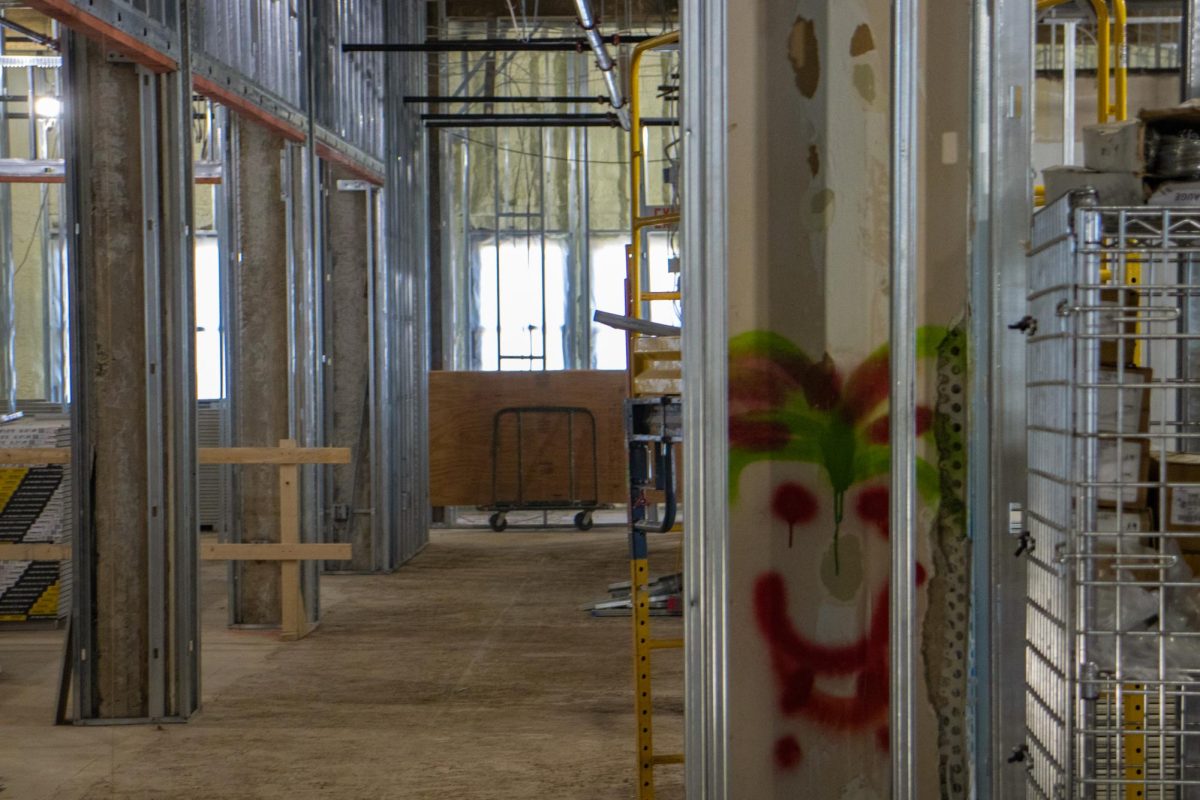V.I.P. Prospies Displace Art History
November 18, 2009
The Green Room was developed as a replacement, or — judging from the enthusiasm of the description — an upgrade, from the old Welcome Center once housed in Centennial Hall. (The old Welcome Center has been replaced by the Perch, the new hangout and revenue-generator which has become popular among students.) The Green Room’s Web site tells prospective students that they will get “the full V.I.P. treatment.” Prospies might get the red carpet treatment, but in order to make way for these celebrity tourists, current students are getting pushed aside.
The Green Room was constructed in a corner of the Katzen Arts Building over the summer. It’s in Room 201, which in the past was used mostly for art history classes. But now the Welcome Center’s use of the room has limited its availability for students and professors.
Katzen is a big building, so one classroom wouldn’t seem like that much of a loss — but there’s a little more to the story.
Before Katzen was built, the art department was fragmented. When the building was being planned, faculty whose offices and classrooms would be housed in it were given significant say in how the building was constructed. After a long interment in that embarrassingly bleak section of campus known as the Watkins building, the possibly radioactive and nearly windowless carcass hidden behind the south side dormitories, the art historians on campus had one major request of the new building which was to be dedicated, in part, to their field of study: a room designed specifically for the study of art history.
Room 201, equipped with two large screens, a powerful projector, and ample seating, was the answer to this plea. Norma Broude, art history professor and co-director of the department’s programs, said the room was “a dream come true.” Professor Broude has been with AU for over thirty years, and says she has “been dreaming of a room like 201 since I started here.” But now that the room has been co-opted by the Welcome Center, art history classes have once again been moved around and pushed aside, mostly relocating into smaller rooms in Katzen or Ward, according to Glenna Haynie, the Art Department’s administrative coordinator.
Broude said she was particularly upset “that we were thrown out not for academic reasons, but in order to make way for a theater where prospective students can watch videos about campus.” She added, “It is very hard for me to understand why prospective students would want to watch contrived movies about campus when they are already on campus.”
The university’s choices in regards to the new Welcome Center “seem particularly insensitive to the needs of students and faculty,” according to Broude. Prospective students will be treated “like V.I.P.s” when they visit the Green Room, but it seems that once they get here, they’re only B-list child stars.


